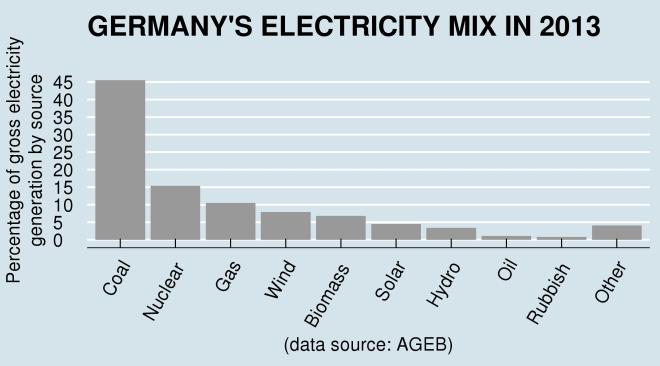Reality Check: Germany Does Not Get Half of its Energy from Solar Panels
August 18, 2014
By Robert Wilson
The rise of the Internet means that simple factual issues can be checked quicker than would have been believed possible a generation ago. The rise of social media means that facts are not checked, they are retweeted.
Such is the case with renewable energy in Germany, where it appears almost anything is to be believed.
Here is the most popular meme: “Germany now gets half of its energy from solar panels.” This does the rounds of Twitter and Facebook almost every day. In fact, it has now spread to more reputable outlets such as Popular Mechanics, and has even appeared on the website of Richard Dawkins, the inventor of the term meme, under the headline “Germany Now Produces Half Of Its Energy Using Solar.” The problem, of course, is that Germany does not get half of its energy from solar panels, and will not do so any time soon.
As with any myth there are multiple versions. In this case it is either that Germany gets half of its electricity or half its energy from solar panels. The latter version is easily refuted by pointing out that the majority of German energy consumption is not in the form of electricity. BMWs, Mercedes and Volkswagens run on petrol and diesel, not electricity.
The more common version of the myth is debunked with simple reference to Germany’s official statistics for electricity generation. And what they tell us is quite simple. Germany does not get half of its electricity from solar panels, instead the figure is around ten times lower. Last year only 4.5% of Germany’s gross electricity generation came from solar panels, far short of 50%.
And if you want to think that half of Germany’s electricity comes from something green you will be disappointed. 46% of generation comes from coal. And just over half of coal powered electricity in Germany comes from burning lignite, perhaps the most polluting way to generate electricity on the planet.
These statistics, then, make it clear that the “solar revolution” that has supposedly occurred in Germany is not worth the name, and is mostly just a combination of hype and wishful thinking. I can make this even clearer by comparing the growth of solar in Germany with that of more old fashioned forms of electricity generation.
During large stretches of winter Germany’s solar panels generate almost no electricity, with output from solar panels being fifteen times higher in July than in January last year. In addition, Germany’s annual consumption of electricity peaks in Winter evenings, when solar panels reliably generate no power. These simple realities mean that Germany, or any other cloudy and high latitude country, will struggle to generate truly revolutionary amounts of electricity from solar panels.
I will end with a simple calculation of how long it will take Germany to reach 50% solar electricity given current build rates.
The new German government has put in place a long-term target of having between 2.5 and 3.5 gigawatts of solar panels installed each year. If we take the higher figure, and assume that 3.5 gigawatts is installed each year, it will take Germany almost ninety years to reach 50% solar electricity. This however is an underestimate. Solar panels must be replaced every twenty or twenty fives years, and 50% solar energy in Germany would require massive advances in energy storage techniques. Germany, then, is around a century away from getting half of its electricity from solar panels.
Does this look like a revolution?
Notes
1. Statistics for Germany’s energy consumption are available from BP and Eurostat. In total, solar energy was 2% of Germany’s primary energy consumption last year, using BP’s statistics. The precise percentage however will vary depending on how energy consumption is defined. If we used the IEA’s definition of primary energy consumption for solar, then the figure would be around 1%. I discussed the problem of measuring renewable energy consumption here.
2. Annual electricity production statistics by energy source for Germany are available from AGEB, while Transparency EEX provides real-time production of solar power. Hourly solar power production for the last three years is available at the website of PF Bach.
3. The points made about seasonal variation of solar power output are not particularly valid for lower latitude countries. For example, capacity factors of American solar panels indicate a much flatter seasonal output. There are no long stretches of the year where most of America’s solar panels are producing essentially no power.
[Robert Wilson is a PhD Student in Mathematical Ecology at the University of Strathclyde. His secondary interests are energy and the environment and writes on these issues at The Energy Collective. Follow him on Twitter: @PrimedMover Email: robertwilson190 at gmail.com or robert.wilson at strath.ac.uk]

